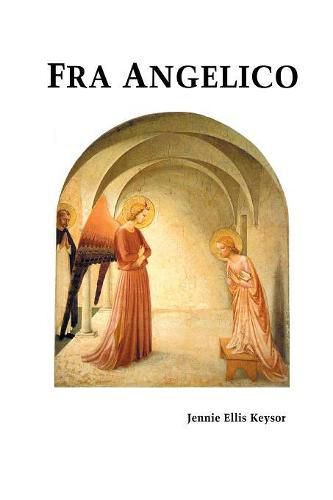Readings Newsletter
Become a Readings Member to make your shopping experience even easier.
Sign in or sign up for free!
You’re not far away from qualifying for FREE standard shipping within Australia
You’ve qualified for FREE standard shipping within Australia
The cart is loading…






This title is printed to order. This book may have been self-published. If so, we cannot guarantee the quality of the content. In the main most books will have gone through the editing process however some may not. We therefore suggest that you be aware of this before ordering this book. If in doubt check either the author or publisher’s details as we are unable to accept any returns unless they are faulty. Please contact us if you have any questions.
FRA ANGELICO
By Jennie Ellis Keysor
FRA ANGELICO, known by several names, including Fra Giovanni Beato Angelico da Fiesole (1399?-1455), is one of the very few painters of the Italian Renaissance who painted religious pictures exclusively. Almost all Angelico’s paintings are religious - he did not paint secular portraits, like, say, Giovanni Bellini or Ghirlandaio. It was Vasari who stressed Angelico’s purity, holiness, faith, humility and devout nature, and this description of Angelico as a holy monk-like painter persists throughout the centuries. John Ruskin called Angelico ‘an inspired saint’.
Fra Angelico stands at the transition between the mediaeval and Renaissance worlds. Angelico’s ‘feelings are in the Middle Ages’, Bernard Berenson wrote, yet he was distinctly a Quattrocento, Renaissance painter. His art combines the timelessness and rigidity of icon painting, where figures are caught in bright, static, hieratic motions, with the new painterly explorations (in form, style and space) of the Quattrocento period.
Fra Angelico’s paintings seem simple, but their simplicity is deceptive: they are the products of training and skill. Giulio Carlo Argan reminds us that ‘everything points to Fra Angelico’s being in touch with the most advanced artists of his early day’. The deep spiritual feeling and tenderness of Fra Angelico’s art seems ‘simple’ or ‘innocent’. It does not seem cynical and world-weary. Yes, but the simplicity is not so much childish as child-like, as a regaining of the freshness of the spirit of childhood. A reactivation of the maternal realm, perhaps, which Fra Angelico manages to accomplish with a directness most other painters are incapable of reproducing.
Fully illustrated, including contemporaries of Fra Angelico. Includes references. 112 pp.
$9.00 standard shipping within Australia
FREE standard shipping within Australia for orders over $100.00
Express & International shipping calculated at checkout
This title is printed to order. This book may have been self-published. If so, we cannot guarantee the quality of the content. In the main most books will have gone through the editing process however some may not. We therefore suggest that you be aware of this before ordering this book. If in doubt check either the author or publisher’s details as we are unable to accept any returns unless they are faulty. Please contact us if you have any questions.
FRA ANGELICO
By Jennie Ellis Keysor
FRA ANGELICO, known by several names, including Fra Giovanni Beato Angelico da Fiesole (1399?-1455), is one of the very few painters of the Italian Renaissance who painted religious pictures exclusively. Almost all Angelico’s paintings are religious - he did not paint secular portraits, like, say, Giovanni Bellini or Ghirlandaio. It was Vasari who stressed Angelico’s purity, holiness, faith, humility and devout nature, and this description of Angelico as a holy monk-like painter persists throughout the centuries. John Ruskin called Angelico ‘an inspired saint’.
Fra Angelico stands at the transition between the mediaeval and Renaissance worlds. Angelico’s ‘feelings are in the Middle Ages’, Bernard Berenson wrote, yet he was distinctly a Quattrocento, Renaissance painter. His art combines the timelessness and rigidity of icon painting, where figures are caught in bright, static, hieratic motions, with the new painterly explorations (in form, style and space) of the Quattrocento period.
Fra Angelico’s paintings seem simple, but their simplicity is deceptive: they are the products of training and skill. Giulio Carlo Argan reminds us that ‘everything points to Fra Angelico’s being in touch with the most advanced artists of his early day’. The deep spiritual feeling and tenderness of Fra Angelico’s art seems ‘simple’ or ‘innocent’. It does not seem cynical and world-weary. Yes, but the simplicity is not so much childish as child-like, as a regaining of the freshness of the spirit of childhood. A reactivation of the maternal realm, perhaps, which Fra Angelico manages to accomplish with a directness most other painters are incapable of reproducing.
Fully illustrated, including contemporaries of Fra Angelico. Includes references. 112 pp.